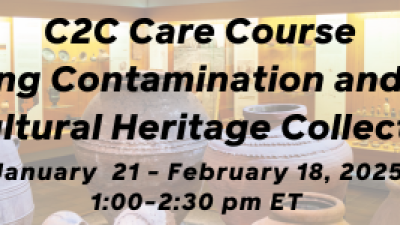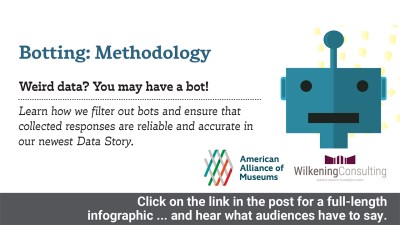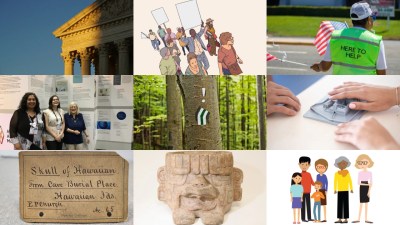Back in April, we encouraged CFM readers to participate in a new study of cultural consumers, the American Life and Culture Survey. (AAM was a co-sponsor of the project.) The preliminary results of the survey have now been released – and they show that “cultural consumers curate their lifestyles to make ends meet and keep life meaningful.” Plus, they keep consuming even when the economy is suffering.
The research was led by Patricia Martin of LitLamp Communications. She and her colleagues pay particular attention to the generational shift in cultural activity that was also explored in CFM’s report on Museums & Society 2034: the Millennial generation is composed of creators, engaged in composing, writing, making and using social media to share their creations, while Boomers are still predominantly consumers of cultural experiences and collectors of art. They find that while both groups spend an average of more than 3 hours a day online, Boomers are more likely to be seeking information than creating content.
Here are some of the “take-aways” from the report:
- The best way to engage the creative cultural consumers is by linking to their existing pursuits, provide participation platforms that that give them the opportunity to be recognized for their work.
- Cultural consumers value health and the environment, and are willing to pay more for products that fit their healthy, green criteria.
- While cultural consumers in general value the use of collective revenue for efforts that increase knowledge, they prioritize K-12 education and public libraries as amenities that should be valued and publicly funded, while viewing support of public universities and museums as personal choices that should be left up to the individual.
- One good piece of news for museums is that cultural consumers are highly politically engaged. More than 90% stay up to date with political news and vote. That makes them valuable potential advocates for museum-friendly policy and funding.
- Ninety percent of them agree that arts and cultural organizations help to keep the local economy strong and to create growth.
The report is intended to help marketers understand the cultural values and social dynamics that are driving consumer behavior. It’s also designed to spark discussions within the cultural community, where some people may be surprised (or intrigued) by Martin’s argument that “cultural consumer’s attitudes reflect the core American beliefs in the power of the individual, the value of a good education, and the possibility of success.”
Skip over related stories to continue reading article








This report raises important questions of how to get the “creative cultural consumers” actively involved in the museum community. A traditional museum has professionally trained curators but these consumers consider themselves curators of their own lives. They create online content via social media instead of just reading what other people wrote. A local art museum is creating an online poll asking their blog readers which pieces of art should be in their next exhibit. This provides an individual voice for bloggers while also drawing them into the museum for the physical result of their online presence. This is one possible step toward marketing the new cultural consumer. How much farther can museums go toward engaging this new demographic? Is this the key for a museum to stay relevant in the future?